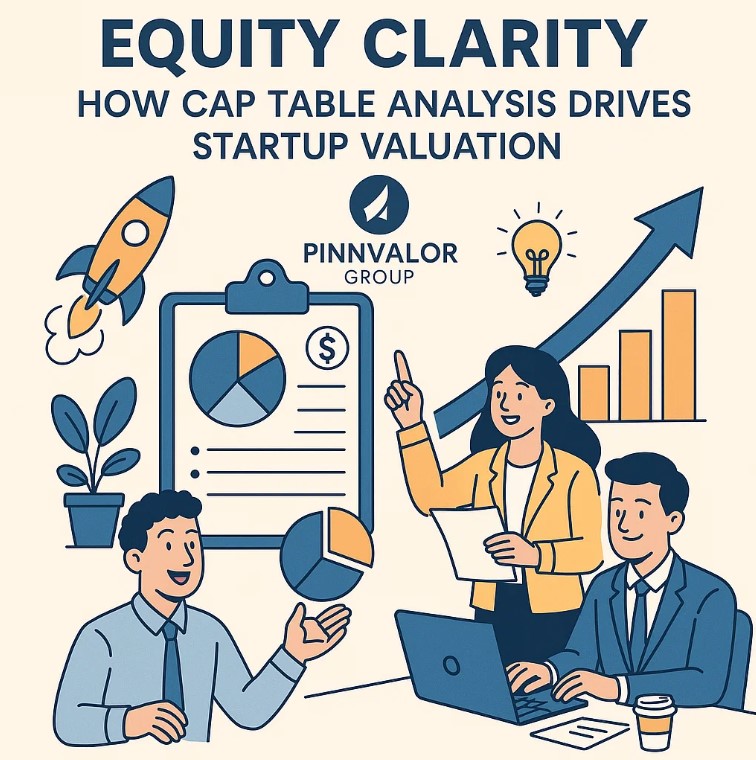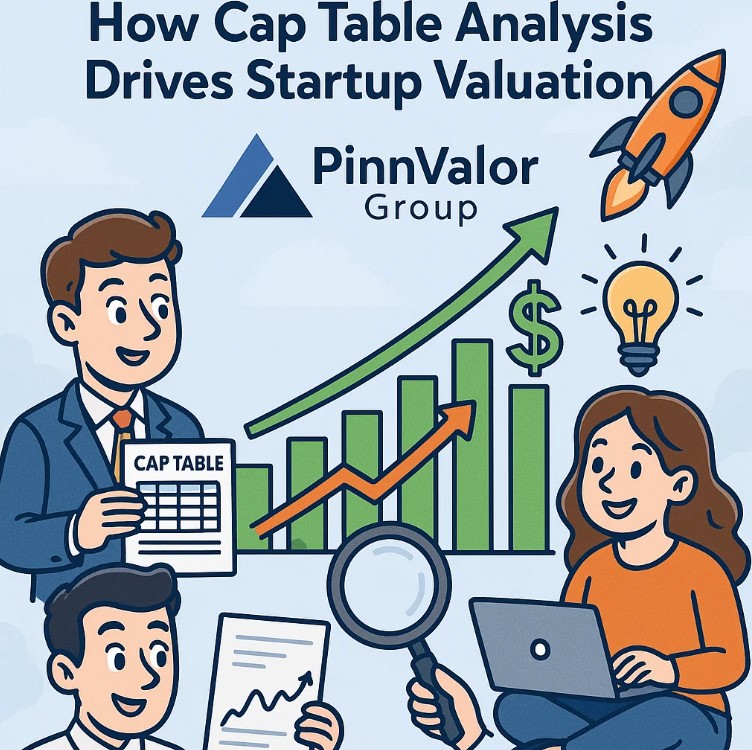
🔍 Why the Cap Table Matters
In the startup world, your cap table isn’t just a spreadsheet — it’s the DNA of your company’s ownership. A well-structured capitalization table (cap table) not only helps manage equity distribution but also plays a pivotal role in determining your startup’s valuation, especially during fundraising or exit events.
Are you in control of your startup’s equity, or is it controlling you?
Every percentage on your cap table is a piece of power. Lose track, and you might lose your company.
📊 What is a Cap Table?
A cap table is a record of a company’s securities, including shares, convertible notes, SAFEs, stock options, and more. It details who owns what percentage, at what valuation, and under what terms. This single document captures the essence of a startup’s ownership dynamics from founding to fundraising and beyond.
💡 Components of a Cap Table
1. Founders’ Equity
Initial equity allocation among co-founders. Sets the foundation for control and dilution.
2. Employee Stock Option Pool (ESOP)
Reserved shares for current and future employees. Impacts investor negotiations and pre/post-money valuation.
3. Convertible Instruments
Convertible notes and SAFEs (Simple Agreements for Future Equity) convert to equity during priced rounds. Their impact on dilution must be modeled.
4. Preferred Shares
Issued during funding rounds, often with liquidation preferences and anti-dilution protections.
5. Post-money Valuation
Valuation of the company after capital infusion. Essential for calculating dilution and investor ownership.
📈 Cap Table and Valuation: The Core Connection
Investors analyze your cap table to assess how much equity they’ll receive for their investment and how that aligns with the company's current valuation.
- Pre-money Valuation: Determines the company’s worth before investment.
- Post-money Valuation: Adds the investment to the pre-money valuation.
- Dilution Impact: Helps understand how new equity issuance affects existing shareholders.
⚠️ Common Cap Table Mistakes That Hurt Valuation
- Overly Complex Ownership Structure – Scares off potential investors.
- Unallocated Option Pools – If not managed transparently, it can lead to disputes or valuation pushbacks.
- Ignored Convertible Instruments – Not modeling future dilution from notes/SAFEs can distort valuation estimates.
- Cap Table Not Updated – Outdated data leads to flawed assumptions and poor decision-making.

📐 Tools for Cap Table Management
Modern startups use tools to manage cap tables and simulate funding scenarios. Popular platforms include:
- Carta – Real-time cap table, valuations, and scenario modeling.
- Pulley – Cap table software designed for founders and legal teams.
- LTSE Equity – Compliance-ready cap table and equity management.
- Excel/Google Sheets – Still common in early stages but prone to manual errors.
🔄 Scenario Analysis: Cap Table in Action
Let’s say a startup raises a $2 million seed round at a $6 million pre-money valuation. The cap table before and after funding will look drastically different.
Pre-Funding:
- Founders: 100%
Post-Funding (with 20% option pool):
- Founders: 60%
- Investors: 20%
- Option Pool: 20%
This breakdown gives investors a clearer picture of ownership and potential returns.
📊 Two Identically Different Cap Tables: A Comparative Glance
Here’s how two startups with identical valuations can appear drastically different through cap table analysis:
Startup A:
- Founders: 80%
- Investor: 20%
- ESOP: Not created yet
Startup B:
- Founders: 55%
- Investor: 25%
- ESOP: 20%
Analysis: While both are valued at $10M post-money, Startup B’s founders have significantly less control due to pre-negotiated ESOP and higher investor stake. This may affect future funding rounds and decision-making.
🔚 Conclusion: More Than Just a Spreadsheet
Your cap table is a live reflection of your company’s financial story and strategic vision. A clean, transparent, and well-maintained cap table not only attracts investors but also protects founder equity and facilitates fair valuation. Treat it as a strategic tool — not just a compliance necessity.
